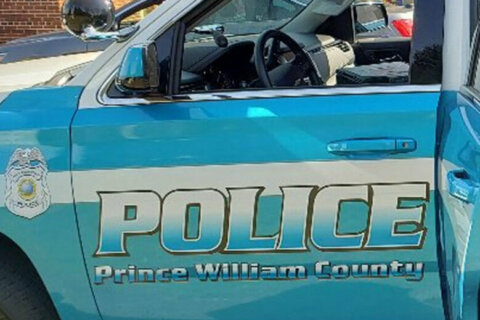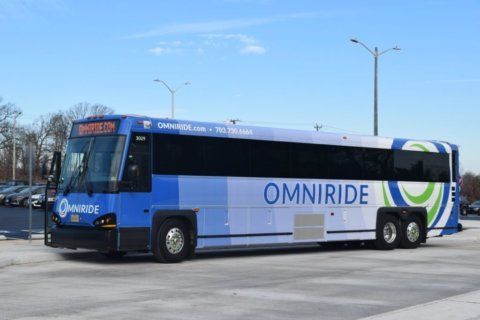This article was republished with permission from WTOP’s news partner InsideNoVa.com. Sign up for InsideNoVa.com’s free email subscription today.
This article was written by WTOP’s news partner InsideNoVa.com and republished with permission. Sign up for InsideNoVa.com’s free email subscription today.
Inflation and rising construction costs are cutting into schools’ purchasing power, costing Prince William County Schools an estimated $674 million extra in borrowing over the next decade.
School system leadership says it won’t be a problem for the division to issue more debt than it has in the past and move forward with new schools and renovations as planned. But they’re also hoping that the inflation that’s been hurting county residents for months is, in fact, returning back to normal. If it doesn’t, those projects may require some changes.
Between the fiscal 2023 capital improvement program and the plan the School Board approved last week, the estimated cost of the forthcoming Woodbridge Area Elementary School, set to open in 2024, grew from $41.6 million to $61.8 million. Estimates for the replacement of Occoquan Elementary School jumped from $44.3 million to $64.8 million. And estimates for the county’s 14th high school went from $157 million to $280.1 million.
According to data from the division’s finance department compiled in January, the cost increases for new schools and other capital projects will result in the school system issuing an additional $674 million in debt over the next nine years, costing an additional $82 million from the general fund in debt service.
General inflation isn’t the only cause for the increases. The school division’s high-performance building design initiative on new buildings and renovations, as well as its prevailing wage mandate – which means that division contractors have to pay U.S. Department of Labor prevailing wages on any project over $250,000 in cost – are also driving expenses.
The high-performance building initiative is projected to account for 20% of new building costs, helping the division meet its adopted sustainability goals. It’s also supposed to pay dividends with operating cost reductions over the lifetime of the school, with features like geothermal heating and cooling systems, solar power compatibility and high-performance windows.
Vernon Bock, the school system’s chief operating officer, said in January that the upgrades should reduce energy consumption by 25% and water usage by 10%, netting a 30% overall reduction in CO2 emissions.
“Some of those investments for sustainability have a higher cost on the front end, like geothermal heating. But then the savings that we realize through that long term is more significant,” Bock said.
School Board members also defended the prevailing wage mandate, which is projected to make up about 15% of project costs, saying it would result in better quality construction and reduce the need for repairs and replacements down the line. And, said Potomac District Board Member Justin Wilk, making sure contractors are paying living wages is just the right thing to do.
“I think it’s long overdue,” he said.
No cause for panic – yet
County financial guidelines keep the school division from paying debt service that exceeds 10% of revenues in an effort to maintain the school division’s AAA bond rating. Even the projected increases wouldn’t run the risk of reaching that threshold as a percentage of current revenues, which will also likely grow. And price estimates on some projects have actually fallen since the finance department’s January presentation.
But Bock said that if costs continue to rise the way they have in the past year, the division could consider scaling back the high-performance initiative or pursuing more “value engineering” in design. That would mean things like lowering ceilings, making hallways smaller and using lower-grade floor tiles.
“When you do that, you have a building that looks different from existing buildings in the community,” Bock said in January. “But when you have a building that looks different from existing buildings in the community … what that can lead to is inequities across the district.”
Speaking with InsideNoVa, School Board Chair Babur Lateef said those kinds of cost-savings measures aren’t under consideration right now. The hope is that more recent indications of slowing inflation will continue, and the school system could even see some financial benefits from Congress’s Inflation Reduction Act, though it’s unclear how significant those might be.
“All of construction across the commonwealth from universities to schools is up. Inflation is a driver of those costs and uncertainty in the markets,” Lateef said.
The county and school division’s AAA bond rating is intact and not at risk right now, he added. And cost savings in the past two fiscal years have actually allowed the division to reduce its bond issuance by about $60 million, putting the school system in a better position to face the increase in coming fiscal years.
“If you look at the projected borrowing over the next few years, those numbers are going to go up more than we thought they would. So we’ll be selling more bonds … but it’ll still be borrowing underneath the 10% cap, which will help us maintain a AAA bond rating between the county and the schools,” Lateef told InsideNoVa. “The impact is on the amount of borrowing and the amount of money we have to set aside to repay that debt moving forward.”







